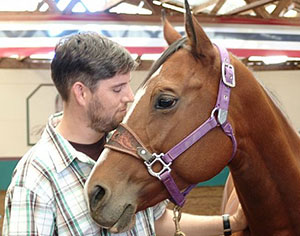DOG CATARACTS
Share This Everywhere!
 Get More Pet Tips
Get More Pet Tips
Content provided Pet Talk with Dr. B is meant for educational purposes on health care and medical issues that may affect pets and should never be used to replace professional veterinary care from a licensed veterinarian. This site and its services do not constitute the practice of any veterinary medical health care advice, diagnosis or treatment.
DOG CATARACTS
Is My Dog Developing Cataracts?
Cataracts are a hardening of the lens in the eye, which is the focusing device in the eye. When the cataracts are called mature, they involve the entire lens and cause blindness. Cataracts can also be immature and only cover a portion of the lens, or be hypermature which is where the cataract starts to shrink and wrinkle over time.
The most common cause of cataracts is congenital, or present from birth, and arises from an abnormal development of the lens or other ocular defects. Cataracts can also be caused by trauma, dietary deficiency, electric shock, metabolic conditions such as diabetes, toxins, and inflammation or uveitis in the eye.
Many owners confuse cataracts with nuclear sclerosis in their older dogs. Nuclear sclerosis is an age-related change of the lens that causes the lens to become denser and appear cloudier. Even though the eye has a cloudy appearance, the dog is able to see through the lens and remains visual.
Cataracts can have several complications, including complete blindness, luxation, secondary glaucoma, or secondary inflammation, if they begin to dissolve over time. Currently, there is no medical treatment to treat cataracts. Not all cataracts progress, however, so monitoring may be the only initial recommendation. The only treatment for cataracts is surgical removal or physical dissolution under anesthesia. A consultation with an ophthalmology specialist is needed to determine if the eye is still visual and the pet would benefit from surgical removal.



